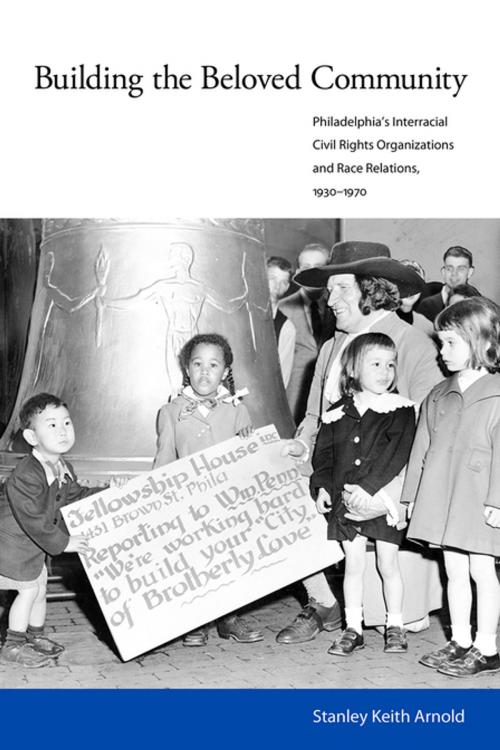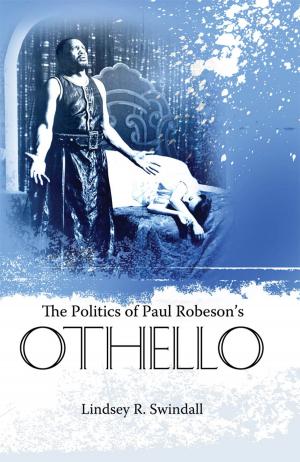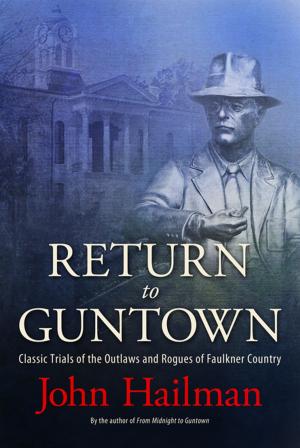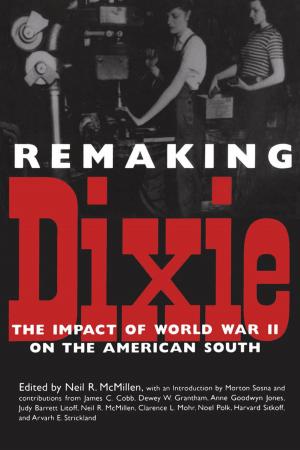Building the Beloved Community
Philadelphia’s Interracial Civil Rights Organizations and Race Relations, 1930–1970
Nonfiction, Social & Cultural Studies, Social Science, Discrimination & Race Relations, Cultural Studies, African-American Studies, History, Americas, United States| Author: | Stanley Keith Arnold | ISBN: | 9781626741683 |
| Publisher: | University Press of Mississippi | Publication: | May 28, 2014 |
| Imprint: | University Press of Mississippi | Language: | English |
| Author: | Stanley Keith Arnold |
| ISBN: | 9781626741683 |
| Publisher: | University Press of Mississippi |
| Publication: | May 28, 2014 |
| Imprint: | University Press of Mississippi |
| Language: | English |
Inspired by Quakerism, Progressivism, the Social Gospel movement, and the theories of scholars such as W. E. B. Du Bois, Charles S. Johnson, Franz Boas, and Ruth Benedict, a determined group of Philadelphia activists sought to transform race relations. This book concentrates on these organizations: Fellowship House, the Philadelphia Housing Association, and the Fellowship Commission. While they initially focused on community-level relations, these activists became increasingly involved in building coalitions for the passage of civil rights legislation on the local, state, and national level. This historical account examines their efforts in three distinct, yet closely related areas, education, housing, and labor.
Perhaps the most important aspect of this movement was its utilization of education as a weapon in the struggle against racism. Martin Luther King credited Fellowship House with introducing him to the passive resistance principle of satygraha through a Sunday afternoon forum. Philadelphia's activists influenced the southern civil rights movement through ideas and tactics. Borrowing from Philadelphia, similar organizations would rise in cities from Kansas City to Knoxville. Their impact would have long lasting implications; the methods they pioneered would help shape contemporary multicultural education programs.
Building the Beloved Community places this innovative northern civil rights struggle into a broader historical context. Through interviews, photographs, and rarely utilized primary sources, the author critically evaluates the contributions and shortcomings of this innovative approach to race relations.
Inspired by Quakerism, Progressivism, the Social Gospel movement, and the theories of scholars such as W. E. B. Du Bois, Charles S. Johnson, Franz Boas, and Ruth Benedict, a determined group of Philadelphia activists sought to transform race relations. This book concentrates on these organizations: Fellowship House, the Philadelphia Housing Association, and the Fellowship Commission. While they initially focused on community-level relations, these activists became increasingly involved in building coalitions for the passage of civil rights legislation on the local, state, and national level. This historical account examines their efforts in three distinct, yet closely related areas, education, housing, and labor.
Perhaps the most important aspect of this movement was its utilization of education as a weapon in the struggle against racism. Martin Luther King credited Fellowship House with introducing him to the passive resistance principle of satygraha through a Sunday afternoon forum. Philadelphia's activists influenced the southern civil rights movement through ideas and tactics. Borrowing from Philadelphia, similar organizations would rise in cities from Kansas City to Knoxville. Their impact would have long lasting implications; the methods they pioneered would help shape contemporary multicultural education programs.
Building the Beloved Community places this innovative northern civil rights struggle into a broader historical context. Through interviews, photographs, and rarely utilized primary sources, the author critically evaluates the contributions and shortcomings of this innovative approach to race relations.















